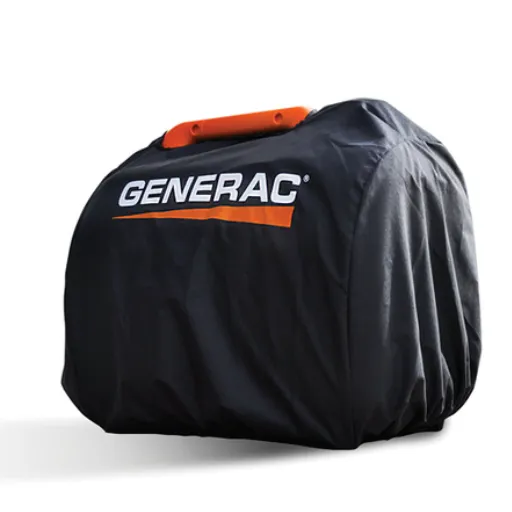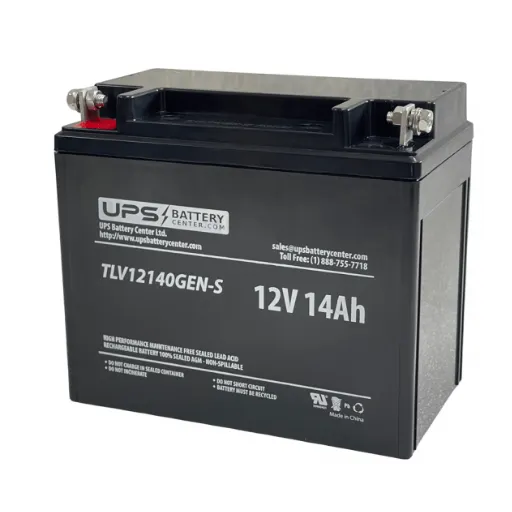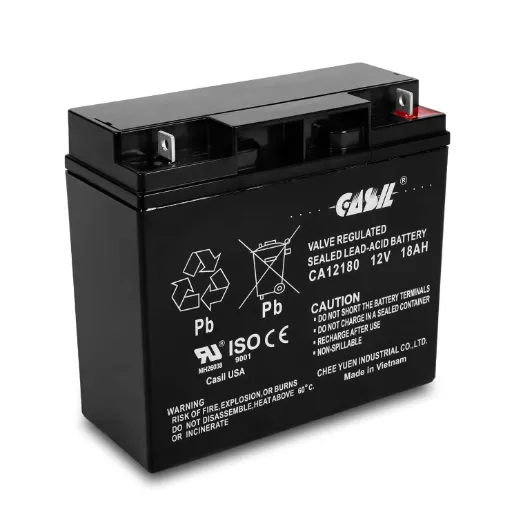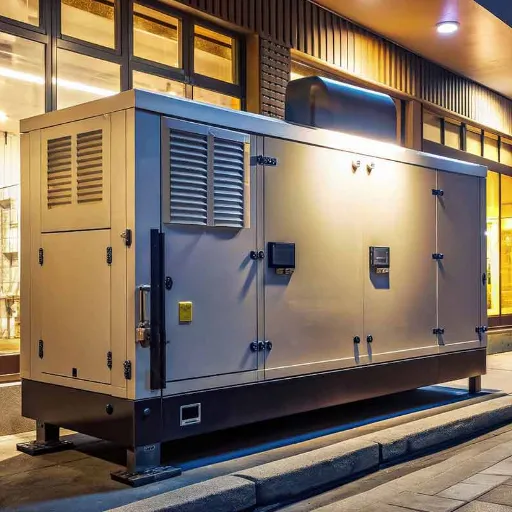Installing a whole-house standby generator is a significant investment, but one that can provide unparalleled peace of mind during power outages and emergencies. Whether you live in an area prone to severe weather or simply want the assurance of uninterrupted electricity, understanding the costs involved in such a project is crucial for effective planning. This guide will break down the installation expenses, including equipment prices, labor costs, and additional factors that can influence your total investment. By the end of this article, you’ll have a clear understanding of what to expect, helping you make an informed decision about securing reliable backup power for your home.
What Factors Influence Standby Generator Installation Cost?

Electrical Work and Transfer Switch Installation Expenses
Electrical work usually has the most impact on standby generator installation costs. The generator must be properly connected to the home’s electrical system, which requires an electrical technician. The generator has to follow set standards and building codes for safety. The generator’s transfer switch must also be installed; This is the device that switches the power from the grid to the generator and vice-versa. It can do this either automatically or manually, depending on how it is set up.
Electrical work costs can highly vary if the home’s wiring layout is done in a certain way, the type of integration being done, and the kind of transfer switch used. On average, a transfer switch costs somewhere between $200 and $2,000; Automatic transfer switches are more costly due to ease of use. Electric technicians have hourly wages that sit around $50 to $100. Complicated tasks might take hours to days if the home is old, due to the outdated wiring systems.
Other factors that could potentially affect the cost include how far the main electrical panel is from the generator, whether the panel needs to be upgraded, or if any trenching/conduit work needs to be done to place the cables. In such circumstances, these factors necessitate acquired cost estimations during the pre-construction stage, thus accurate budgeting can be done.
Generator Pad Requirements and Installation
Both proper installation and best practices for patch placement on a generator box are key to ensuring the optimal functioning conditions for your generator. Installation requires the upper side of the patch to be made of some abrasive material. Normally, gravel-filled or concrete-filled pads are the accepted standards, since they do not degrade in weather. The sides should extend on all four sides beyond the generator trim at least six inches next to the south outline of the generator model. If a generator measures 48 inches by 24 inches, the pad should have a minimum dimension of 60 inches by 36 inches. As the impact increases, the spawn is supposed to receive a minimum of 4 inches of subgrade height and should be kept from slipping by using rebar or wire mesh.
A structure that is insufficiently prepared poses the greatest hazard. The subgrade must be compacted and free of loose material to create a firm level surface where any loose material within the bounds of the slab is thinned out. Infusing a layer of gravel below the slab assists with transverse drainage and further builds resistance to moisture collection. Alongside ensuring a guarantee for policy compliance, it is important to comply with all relevant local legislation regarding the generator. Each piece of machinery comes with guidelines designed for specific models, and compliance with these is a must.
Last but not least, the choice of locations for installation should consider distance from the residence, ease of maintenance access, and ventilation sufficient to avoid exhaust gas buildup. Proper planning during the generator pad installation process can help the generator operate efficiently and reliably for years, while extending its life, maintenance, and use.
How Much Does Professional Generator Installation Cost?
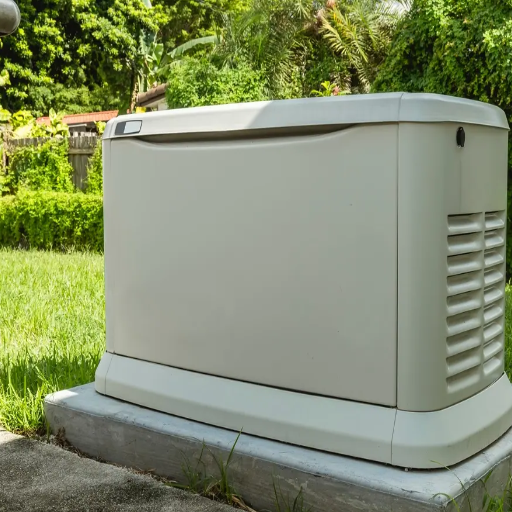
Generator Installer Rates and Labor Costs
As with any service, there are prices to consider such as accessibility, installation intricacy, and requirements for each individual generator. An absolute average suggests installation costs in total can be anywhere between $500 – $4,000. Tradeoff labor expenses tend to be on the lower range for portable generators and more heavy duty work such as wiring and concrete work for permanent standby generators tend to increase labor prerequisites.
Hourly rates for electricians need to be factored in as well, where an average of $50-$100 per hour at an estimated 5-20 hour total rounded scale is expected. Additional costs can come in the form of certified installers who need to meet local zoning, code compliance, and safety rules, which invoke specialized nature fees.
Homeowners looking for a more accurate estimate should consider getting quotes from a professional who is licensed and can evaluate site-specific factors like gas line proximity, electric panels, or any custom work that may be required. Also, remember that some installation services cover the inspection and testing of the installation, and this may affect the total labor cost.
Whole-Home Generator Connection to Existing Electrical Systems
All-in-one home generators are quite helpful, albeit, integrating them with existing electrical systems is a meticulous task that requires prepping in advance. Depending on the installation, adhering to codes and local regulations is just as important, if not more so. In particular, the most significant part of the electrical integration is the transfer switch, which is what relays the generator’s power to the grid. Without them, risking backfeeding power into the grid could be devastating for both the utility employees and electrical systems, which is why generators must have some form of protection.
There are two types of transtock systems – manual transfer switches and automatic ones (ATS). Although both serve the same purpose, their differences separate the ATS as more convenient. If power does go out, home switches necessitate the manual changing to other power sources, while ATS units automatically use their sensors to change to generator power with zero hassle. Therefore, ATS systems are the clear winner for all-in-one home generators as users can depend on them to work and be convenient.
Sure, dependable ATS systems are ideal, but detailed load calculations for power usage are critical in an entirely different sense. If any generator device is going to be practical, the electricity used to power a house must last without overloading. Because licensed electricians specialize in calculating the starting and running wattage of critical appliances, those deluxe HVAC systems and well pumps that quench one’s thirst get extra consideration when determining if they can bear the weight.
Lastly, the generator compatibility will require changes to the wiring infrastructure, including the routes to the main electrical panel. Local regulations may require changes to outdated and or lacking systems. Comprehensive installation ensures the proper solution is applied to all aspects of safety and efficiency should a power loss occur.
What’s the Total Cost to Install a Whole House Generator?
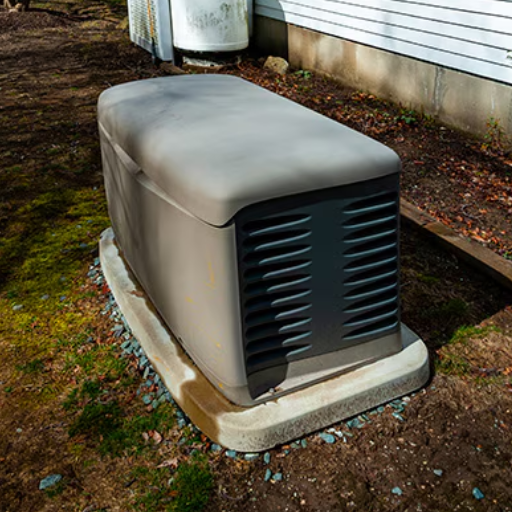
10kW vs. 20kW Generator System Pricing
The overall expense for installing a whole-house generator depends on the capacity, brand, and complexity of installation. For smaller homes, a 10kW generator is adequate. It is capable of powering essential circuits like lighting, refrigeration, and even basic HVAC systems. On average, a 10kW system’s unit cost ranges between $3,000 and $6,000. Its installation cost also ranges from $2,500 to $4,500. This makes the estimated total cost around $5,500 to $10,500.
A 20kW generator may be useful for larger homes or for homes that require higher energy loads. These units can handle high-powered appliances as well as central air conditioning and multiple circuits at once. 20kW generators range from $4,500 to $10,000 of base price depending on brand and features. Obtaining the larger systems usually comes with a total installation cost between $3,500 and $6,000. This totals their cost estimate to $8,000–$16,000.
Make sure to take into account the type of fuel source (propane, natural gas, or diesel), concrete pad and enclosure needs, and local permits as they may impact pricing. Getting a load analysis done by a professional installer makes sure that the selected generator size works for the house’s energy requirements for cost and performance optimization.
Automatic Transfer Switch and Accessories Costs
An automatic transfer switch, or ATS, is a critical feature for standby generators since it manages switching the power source from the utility to the generator seamlessly and automatically during outages. Pricing for an ATS usually sits between $400 and $2000 depending on its amperage rating. Models with higher capacity, such as those equipped with 200 amp service panels or greater, are more expensive but required for homes with high electrical loads.
Remote monitoring and weatherproof enclosures improve the functionality of a generator system and provide robustness. Enclosures are priced between $300 and $1000, while battery warmers fall between $50 and $150 depending on size and operating conditions of the generator. Solutions providing remote access to generator status through mobile applications or web portals average a cost of $200 to $400.
All remote monitoring, weatherproof enclosures, ATS, and their accessories can range from $1000 to $4000 as an addition to the initial purchase of the standby generator system. It is worth noting all these components when planning, as they enable the standby generator setup to be responsive and sustainable while operational.
How Do Fuel Types Impact Generator Costs?
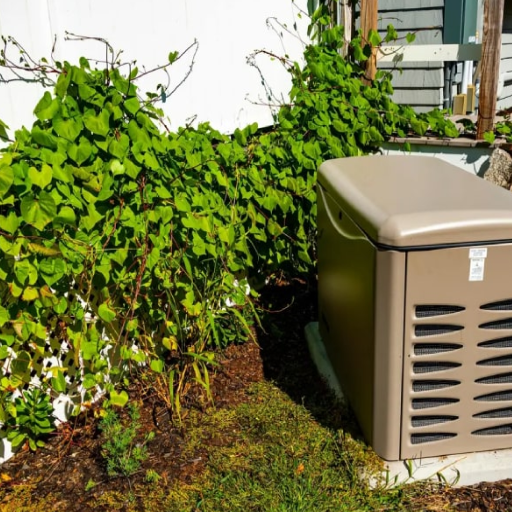
Natural Gas Meter Upgrades and Connection Costs
Range and scope of existing infrastructure cost factors impact the pricing of upgrading a natural gas meter and installing a standby generator. Furthermore, a generator’s location with respect to the natural gas meter also plays a role. Natural gas fueling systems have an increased need for fuel flow which may involve replacing a residential meter with a larger one. Renovations often fall between $500 and $1500, but these estimates tend to rise with the addition of complex permitting and installation fees.
Moreover, the cost of the gas extending from the meter to the generator must be included, as new gas lines will need to be installed. They charge for each foot of the trench, which has soil condition factors, and any out of gas service required rerouting work adds significantly to the cost. The average cost of connection is estimated as follows: around $20 to $50 per foot which translates to a total of $500 to $5000, depending on project scope.
These expenses need to be planned out in detail to guarantee the budget allocated for the installation and operation of a gas-powered device system is sustainable in the long run.
Propane Tank Installation and Fuel Cost Considerations
The process of installing a propane tank requires attention to detail and precision for safe and effective operation due to various safety, technical, and logistical considerations. First, determining a tank’s size is critical. It is proportional to a generator’s energy estimates; hence, it is mandatory to predict energy requirements correctly. Residential propane tanks have sizes ranging from 100 gallons to 1,000 gallons, with larger tanks preferably used in continuous operation or high-demand applications. Furthermore, the construction works along with fire safety regulations must be followed too, which influences the safe clearances of residential propane tanks to buildings, fire hazards, and other structures and open spaces. For instance, a propane tank with a capacity of 500 gallons will generally require a space of not less than 10 feet clear zones from buildings and other developments and property boundaries.
Along with those, installation costs also come with direct and indirect costs, such as regulatory inspection and municipal permits will add several hundred dollars depending on the city restrictions. Their prices also differ from region to region by large amounts. For instance, aboveground tanks are priced at $400-$1,200 because they are easier to conceal, while underground ones can require from $1,500 to $5,000 due to excavation, added safety features, and complex construction. These also come with permits and regulatory inspections that may amount to several hundred dollars based on municipal restrictions.
Propane consumption is another extremely important concern affecting operational expenditures. An average 7-kilowatt generator set consumes about 1.2 gallons of propane per hour when operating at 50% load. In like manner, a 22-kilowatt generator may use well over 3.6 gallons per hour under the same conditions. In many areas, propane prices range from $2.50 to $4.50 per gallon. The cost of constant use, especially during protracted outages, can substantially increase. Balanced budgeting and uninterrupted service delivery warrant a thorough usage forecast utilizing generator capacity and load expectations, which is key in budgeting for propane refueling.
What Ongoing Costs Should Homeowners Expect?

Generator Maintenance and Service Expenses
Regular maintenance plays a key role in maintaining the functionality and extending the lifespan of a home generator. Oil changes, replacements of air filters, and checking the battery system, belts, and hoses so that they do not get damaged prematurely are all parts of maintenance. The oil should be changed after 50-200 hours of operation as per industry standards. The smaller and portable variants of generators tend to require more frequent maintenance.
Professional inspections are suggested to be done every year at a cost ranging from $200 to $600. The fee varies depending on the size of the generator, its location/user, and the level of servicing needed. Technicians perform an array of checks on the generator to ensure metric compliance with preset safety standards such as fuel efficiency, leakage, electrical connection integrity, and many others. Maintenance neglect may drive up the costs anywhere between $400-$1000, stemming from the repairs needed on the alternator, or replacing the fuel system.
Moreover, those homeowners with standby generators must consider the wear and tear associated with weekly self-tests typically programmed for operational, readiness, generator standby status. Such tests burn a little fuel and can, at times, require recalibration of the control systems, especially with available software’s digital controllers. Remembering these recurrent expenses is important for the overall budget as well as for the continued reliability and performance of the generator over time.
Fuel Consumption Costs During Power Outages
Analyzing the operational costs of backup diesel generators requires careful consideration when evaluating fuel use during power outages. Striking fuel consumption estimates also find a place in standby diesel generators, where, on average, each generator consumes between 0.4 to 0.6 gallons of fuel per hour for each 10 kW of power produced.
A 50kW generator operating at 75% load may burn approximately 3 to 4 gallons of diesel per hour. For a 24-hour outage, the figure is roughly between 72 and 96 gallons of fuel. In most areas where the price of fuel can fluctuate with a $3 to $5 average per gallon, the cost incurred lies between $216 and $480 per day.
With moderate sized generators enduring an outage cost supports the view that these units are not the most economically viable. When the diesel fuel supply is on standby, operational costs for these generators do not hope to achieve any savings over a multi-day outage.
Over a prolonged outage, focus on fuel delivery logistics and their storage capacity becomes important. Ineffective handling of the operations can render fuel unusable over time, thereby degrading generator performance and subsequently increasing costs for maintenance. Using fuel management systems along with real-time monitoring technologies has been proven to enhance fuel consumption and cost savings during extended power outages.
References
Frequently Asked Questions (FAQs)
Q: What factors influence the cost of a home generator installation?
A: Several factors affect the total cost of installing a home standby generator. The primary cost factors include the generator’s capacity (measured in kilowatts), the brand, installation complexity, transfer switch requirements, and any necessary electrical upgrades. Additional considerations include fuel type (natural gas, propane, or diesel), permit fees, and whether your home needs a concrete pad. The size of your home and which appliances you want to power (furnace, air conditioner, water heater, etc.) will determine the generator capacity you need, significantly impacting the overall cost.
Q: How much does a standby generator typically cost for an average home?
A: For an average home, a standby generator system typically costs between $7,000 and $15,000 fully installed. Smaller units (10-12 kilowatt) that power essential circuits might cost $7,000-$10,000, while larger whole-house systems (20-22 kilowatt) generally range from $10,000-$15,000. Premium whole-house liquid-cooled generators can exceed $20,000. This price includes the generator unit, transfer switch, installation labor, electrical work, and often a concrete pad. Prices vary based on your location, the complexity of your home’s electrical system, and whether additional work is required to connect to gas lines or install proper conduit.
Q: What size house standby generator do I need for my home?
A: The size of the house standby generator you need depends on what you want to power during an outage. For essential circuits only (refrigerator, some lights, furnace, and a few outlets), a 10-14 kilowatt generator is usually sufficient. For powering most appliances, including a small air conditioner, a 16-20 kilowatt unit is typically appropriate. To run your entire home, including larger air conditioners and electric heating systems, you’ll need a 22-48 kilowatt generator. A professional assessment of your electrical loads is recommended before purchasing a generator.
Q: What ongoing costs should I expect after installing a home backup generator?
A: After installing a home backup generator, you should budget for several ongoing costs. Annual maintenance typically costs $200-$300 if performed by a contractor, which includes oil changes, filter replacements, and system checks. Fuel costs will depend on usage—during outages, a generator can consume 2-3 gallons of propane or natural gas per hour. Most generators require battery replacement every 2-3 years ($100-$150). Additionally, expect increased homeowners’ insurance premiums, and set aside funds for potential repairs after warranty expiration. Many dealers offer maintenance packages that can reduce these costs over time.
Q: Does a house standby generator add value to my home?
A: Yes, installing a house standby generator typically adds value to your home. Real estate studies suggest homeowners can recoup 50-85% of the installation cost when selling their property. In areas prone to frequent power outages, a backup generator can be a significant selling point. Beyond financial return, a generator provides peace of mind, prevents loss of perishable items, maintains essential systems like heating, hot water, and security, and ensures continuous operation of medical equipment during outages. When consulting with realtors, many confirm that homes with standby generators sell faster in regions with unreliable power.
Q: What additional installation costs might I encounter for my home standby generator?
A: When installing a home backup generator, several additional costs may arise beyond the basic equipment and labor. These can include: electrical upgrades to your circuit breaker panel (potentially $500-$2,000), gas line extension or plumbing work ($300-$1,000), concrete pad installation ($300-$500), permits and inspections ($50-$200), load management systems or load shedding equipment for managing air conditioners and other high-demand appliances ($300-$800), and trenching for underground conduit ($10-$30 per foot). Site preparation may also incur costs if landscaping or obstacles need to be addressed. These extras can add 15-30% to your total project cost.
Q: How long does it take to install a whole-house standby generator?
A: The complete installation process for a whole house standby generator typically takes 1-3 days of actual work, but the entire process from purchasing to final operation can take 2-4 weeks. After purchasing a generator, you’ll need to wait for delivery (1-3 weeks depending on availability), obtain permits (a few days to a couple of weeks), schedule the installation (depends on contractor availability), complete the installation (1-3 days), and then arrange for inspection and activation. The physical installation involves placing the generator on a pad, connecting fuel lines, installing the transfer switch, connecting to your home’s circuit breaker panel, and testing the system. Weather, permit delays, and special circumstances like difficult terrain can extend this timeline.
Q: Can I install a backup generator myself to save on costs?
A: While DIY installation might seem like a way to save money, it’s generally not recommended for whole-house standby generators due to significant safety and compliance issues. These systems require professional knowledge of electrical codes, gas line connections, and local permit requirements. Improper installation can void warranties, violate building codes, create fire hazards, and potentially cause fatal electrical accidents. Additionally, most manufacturers require professional installation for warranty validation. The areas where homeowners can save money include site preparation, obtaining multiple quotes from contractors, purchasing during promotional periods, and opting for essential circuit coverage rather than whole-house backup if your needs are limited.




